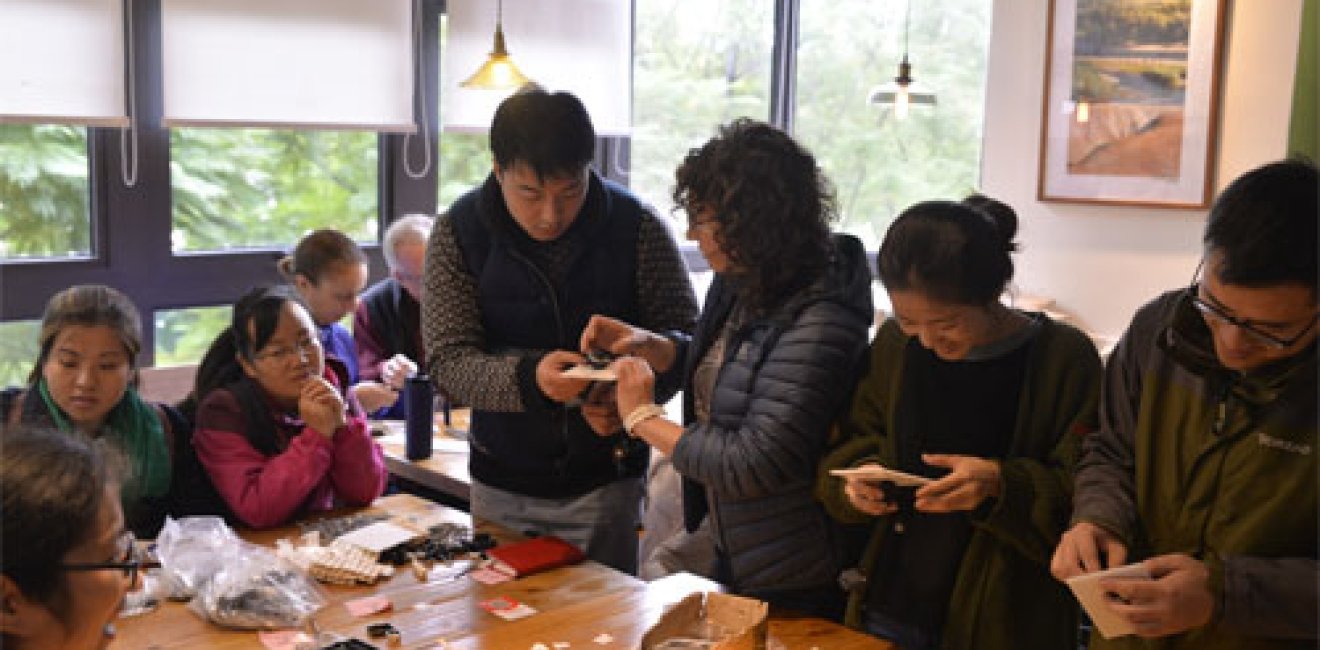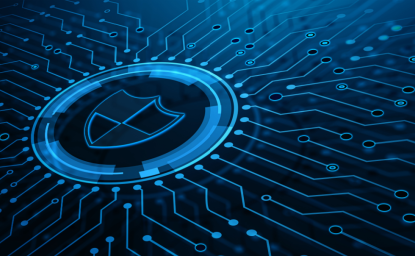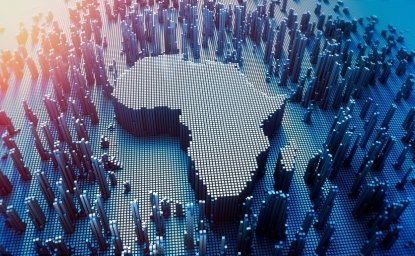
A blog of the Science and Technology Innovation Program

Increasingly, the public is mobilizing its own collection of scientific data -- sometimes referred to as citizen science, or in other contexts, community science -- leveraging this information to educate, empower, and advocate for local environmental and health concerns. Grassroots examples of community-powered science initiatives know no regional boundaries. In the United States, the Clean Air Coalition of West New York (CACWNY) and other such groups have successfully leveraged volunteer-collected data to help enforce EPA policy guidelines. In China, NGOs like Green Hunan have created a network of "waterkeeper" volunteers to monitor water quality, in an effort to crack down on polluting industries.
The benefits of the public engagement around the scientific collection of data are twofold. First, there is an argument for breadth of data collected. Green Hunan developed a network of 500 volunteers to monitor water quality in their local area. Second, it can help inform the implementation or enforcement of existing policy. In the case of CACWNY, the collected air quality data persuaded municipal officials and the Environmental Protection Agency to conduct local air quality studies, which in turn confirmed the industries were in violation of air pollution standards. A final benefit is one of agency: community science provides an opportunity for the public to learn about science and the tools of science in a way that has direct, meaningful impact.
Case Example: Public Lab
[[{"fid":"148701","view_mode":"default","fields":{"field_file_image_alt_text[und][0][value]":"Public Labs Workshop","field_file_image_title_text[und][0][value]":"","field_file_source[und][0][value]":"Pacific Environment","field_file_caption[und][0][value]":"A citizen science workshop in Chongqing, making microscopes."},"type":"media","attributes":{"alt":"Public Labs Workshop","class":"media-element file-default"}}]]
For nearly 20 years, the U.S. NGO Pacific Environment has carried out a multi-faceted capacity building program in China to help grassroots community groups identify pollution problems and work with local governments to find solutions. To open up more conversations about the potential of community science in China, the U.S. NGO Pacific Environment invited one of the leading organizations in the community science movement, the Public Laboratory for Open Technology and Science (Public Lab), and the Wilson Center's China Environment Forum (CEF) to share their experiences and conduct community science workshops in Chongqing, China in November 2018. The workshops focused on training Chinese environmental grassroots groups, community leaders, researchers and educators how to collect, convey, and leverage environmental data in order to address pressing local environmental concerns and strengthen science education. Historically, the tools and training for these public volunteers engaging in science are not always consistent.
Public Lab was founded in response to the information blackout in the wake of the BP oil spill in 2010, during which thousands of residents captured hundreds of thousands of aerial photos that documented the advancing oil spill. The nonprofit Public Lab is an open community that develops and applies open-source tools to environmental investigations. I sat down with Public Lab staff members who facilitated the workshops in Chongqing, Liz Barry (Community Development Director) and Stevie Lewis (Outreach Director) to get a better understanding of community science and how NGOs like Public Lab facilitate public participation in environmental governance all over the world.
Gill Zwicker: What is community science? Why does Public Lab use this term instead of citizen science?
Liz Barry: Community science grows out of the tradition of popular education and action research where people set their own local goals—in the case of community science, for environmental health quality -- and then pursue research and information gathering to inform and govern themselves more appropriately. Based on a community's environmental concerns, we build up a collaborative project, engaging individuals with diverse minds, backgrounds, and expertise to pursue answers and ultimately, to pursue justice. We tend not to use the word citizen science because it has become associated with a kind of crowdsourcing of observational data that serves to answer questions asked by scientists.
GZ: What determines which issues you tackle? Could you share some examples of projects that you have helped facilitate?
Stevie Lewis: We address issues, topics, and ideas that people in the community have. Anyone with an environmental concern can contact us; we're there to help build capacity around that concern.
This past February in Houston we facilitated a new project at our annual barn-raising event. Because the local community lives in a chemical corridor, many residents had questions about soil contamination in public spaces, specifically, a community park that was flooded during Hurricane Harvey. Public Lab works with a number of groups that have various soil testing or soil monitoring resources; so, we brought these resources and people together at the barnraising event. This example is typical of what we do. We work with community groups on environmental questions they have, and build resources so that people can understand -- in this case -- more about soil health, and advocate for the health of that public space.
LB: Many of Public Lab's impacts have resulted from people taking aerial photographs with extremely low-cost equipment. Balloon and kite photographing equipment have been critical in documenting cases of environmental pollution. Photos can serve as evidence, whether in a court of law or the court of public opinion. A good example is that of an individual who snapped photographs that documented the dumping of coal from a terminal directly into the Mississippi River. As a result, the industrial operator in Louisiana was fined by a government agency.
Another example occurred in New York City when Gowanus Canal stewards who were photographing their plantings on the banks of the canal inadvertently captured a bus depot operator dumping motor oil into the canal. Lawyers used the photo in court to hold the company liable. By facilitating community scientists to take aerial photos, Public Lab helps people document what they've experienced in their environment and use the data to advocate for improvements.
[[{"fid":"148706","view_mode":"default","fields":{"field_file_image_alt_text[und][0][value]":"Helping construct a spectometer","field_file_image_title_text[und][0][value]":"","field_file_source[und][0][value]":"Pacific Environment","field_file_caption[und][0][value]":"Stevie helping to construct a spectometer at a Public Labs workshop"},"type":"media","attributes":{"alt":"Helping construct a spectometer","class":"media-element file-default"}}]]
GZ: Do you see some commonalities and differences between community science in China and in the US?
LB: Yes. In both China and the US there is a growing connection between science, education, and civic engagement. We're seeing a prioritization of environmental education in combination with science, technology, engineering, and math (STEM), casually referred to as E-STEM. The onus to deliver E-STEM education, of course, falls on the schools and educators. As a result, we're seeing growth in educators reaching out to community science.
In terms of differences between community science in the two countries, the application of data is quite divergent. In China, people are collecting data; but the data typically goes to the government. In aggregate, the data usually doesn't get released publicly or even back to the volunteers who collected it, making it difficult to motivate volunteers to stay involved and see the impact of their participation. We are seeing many instances where the Chinese government responds to community collected data, perhaps more than in the United States; but at the same time, the volunteers don't know the full meaning of their participation because the collated information isn't flowing back to them.
In the United States, there is more of a groundswell of participation plus relatively accessible channels to media that enable the public to hold governments accountable from the outside; but, there are few paths for community-collected data to officially be considered in governance processes. The U.S. way is to sort it out in court. But at least with transparency, the citizenry can both know what's going on with -- and see the impact of -- their community science efforts.
GZ: Has Public Lab encountered any obstacles or difficulties that have impeded your work in building up community science in the US?
LB: There are structurally unjust issues with the burden of proof. Generically, imagine an injustice takes place; the people with the least economic and social power must take it upon themselves—with comparatively fewer resources -- to prove it took place. This dynamic plays out in all aspects of governance, including environmental governance. To address this fundamental disadvantage, Public Lab engages communities in open source tool-building in order to advance the scientific agency of as many people as possible, shifting the advocacy strategy from anecdote to dataset. To address questions about the validity of community-collected data, we simply "show our work." By showing our work, I mean we publish the specific sensors we used including links to datasheets, share the full records of the data, include metadata, and point to the nearest most applicable reference data from the government.
GZ: What would you recommend to individuals in China and the United States if they want to get involved in local community science work?
SL: When you have a question or an issue that you're concerned with, gather people around that issue with the lens of equity, and share expertise and experience in order to address the issue. For example, a number of the groups who attended our training in Chongqing were concerned about waste, especially plastic pollution, around their local water source. We encouraged them to ask themselves questions like, "Who are the people affected by this?" "Who are the people who have resources to engage with it?" "Who are the people that have some knowledge about this specific issue?" Then, share a space with these individuals with the understanding that everyone at that table has things to share, to learn, and to work on together.



